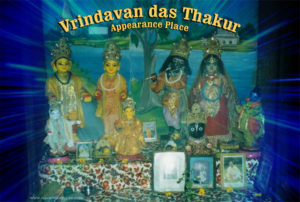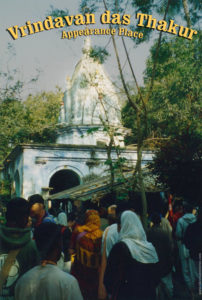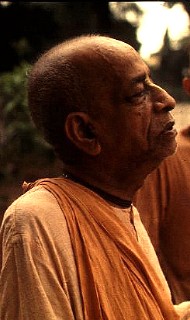By Govinda caran das
Dear devotees,
Hare Krishna. Please accept my humble obeisances. All glories to Srila Prabhupada.
We just celebrated ISKCON’s 50th anniversary at the Sadhu Sanga Retreat last week. To thank all the sponsors and core volunteers who work for the retreat all-year, we have a tradition of gifting them a sweatshirt. This year, we wanted to do a very special design for the sweatshirt to commemorate ISKCON50.
The inspiration for the design came from His Holiness Romapada Swami Maharaja who had come up with the title “The Seven Petals of ISKCON” for his Gita Nagari retreat last weekend to discuss the seven purposes for which Srila Prabhupada founded ISKCON. The pun here is the fact that there are seven petals in the ISKCON logo, which can be taken to mean the seven purposes of ISKCON. (By the way, I’m curious to know who designed the ISKCON logo originally and if this pun is intended).
One of the things I’ve been having difficulty with is remembering the seven purposes of ISKCON – as they are a bit long. Modern companies have figured out that remembering the mission is important to ensure all the activities of employees are aligned with the mission of the organization. For e.g. Google leaders repeatedly emphasize their mission of “organizing the world’s information and making them universally accessible” over and over in meetings so that employees keep that in mind when developing any product.
So we thought of making it easy to remember the seven purposes of ISKCON through the design of the sweatshirt. To do that, we did the exercise of taking each purpose and boiling it down to its core essence to fit in just two words so that we can use that as a mnemonic to remember the whole purpose. Here is what we came up with based on Romapada Swami’s explanation of these purposes in this article http://www.dandavats.com/?p=11900
1. To systematically propagate spiritual knowledge to society at large and to educate all people in the techniques of spiritual life in order to check the imbalance of values in life and to achieve real unity and peace in the world. => *Spiritual Education*
2. To propagate a consciousness of Krishna (God), as it is revealed in the great scriptures of India, Bhagavad-gita and Srimad-Bhagavatam. => *Krishna Consciousness*
3. To bring the members of the Society together with each other and nearer to Krishna, the prime entity, thus developing the idea within the members, and humanity at large, that each soul is part and parcel of the quality of Godhead (Krishna). => *Loving Relationships*
4. To teach and encourage the sankirtana movement, congregational chanting of the holy name of God, as revealed in the teachings of Lord Sri Caitanya Mahaprabhu. => *Congregational Chanting*
5. To erect for the members and for society at large a holy place of transcendental pastimes dedicated to the personality of Krishna. => *Temple Construction*
6. To bring the members closer together for the purpose of teaching a simpler, more natural way of life. => *Farm Communities*
7. With a view towards achieving the aforementioned purposes, to publish and distribute periodicals, magazines, books and other writings. => *Book Publication and Distribution*
After doing this distilling exercise, our appreciation for Srila Prabhupada grew so much more as it helped us understand what a great visionary His Divine Grace is. Even when most of these purposes hadn’t manifested yet, Srila Prabhupada had such a futuristic vision with which he had encoded a spiritual blueprint for our Society in these purposes. Fast forward fifty years from then – still we are doing exactly just these things in ISKCON!
So we put these two words on the sides of each petal. And now, how do we easily remember these two words for each purpose? For that, we came up with an image for each purpose that helps us remember the corresponding two words easily – after all a picture is worth a thousand words. Putting all these together, this is the final design we came up with:

The front of the sweatshirt has a customizable design where each individual Temple/project can put their logo.
We printed 250 sweatshirts for Sadhu Sanga and 120 sweatshirts for Gita Nagari Memorial Day Weekend retreat and all of them were sold out! Since there is so much interest amongst devotees, we are making this design available for any Temple/project to customize it for their own congregation.
To start with, we’ve customized the sweatshirt for the first ISKCON Temple which Srila Prabhupada started at 26, Second Ave in New York in 1966 as a way of helping with the maintenance of the 26 Second Ave Temple as mentioned here: http://krishnanyc.com/iskcon-50th-anniversary. The designer of the sweatshirt, Mother Jaeme from ISKCON Laguna Beach, has kindly offered to donate 50% of the profits towards the maintenance fund for the 26 Second Ave Temple. Here is the link to buy http://sundaram.life/collections/apparel/products/iskcon-50-anniversary-hoodie this really high-quality sweatshirt. Please help spread the word: the more people buy, the less the printing costs are and the more funds we get for this holy tirtha in NYC.


Who wouldn’t want to get this beautiful sweatshirt, anyway?
And, next time, when you happen to stand in a long Prasadam line behind a person wearing this sweatshirt, you probably wouldn’t mind the wait – as it’s yet another opportunity to remember Srila Prabhupada’s greatness!
Hare Krsna,
your servant,
Govinda caran das.

 By Nate Rabe
By Nate Rabe




















 By His Divine Grace A.C.B. Swami Prabhupada
By His Divine Grace A.C.B. Swami Prabhupada By Niranjana Swami
By Niranjana Swami By Giriraj Swami
By Giriraj Swami









 By Kavicandra Swami
By Kavicandra Swami 






